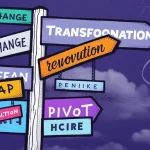Table of Contents
More than a million participants have used the platform to test models and tackle real problems, demonstrating not only the extensive reach of this community but also the diverse range of challenges they address, from predictive analytics to innovative solutions in various industries. This engagement shows how fast teams can move from idea to proof, enabling them to rapidly iterate on their concepts and validate their hypotheses in a collaborative environment.

This article explores AI business applications Kaggle enables through its unique ecosystem, showing how an online community and platform connect artificial intelligence exploration to tangible business value. Teams can validate ideas quickly with public data and shared models while keeping costs and time low.
The community and competitions act as a proving ground for machine learning work. From tabular tasks to generative text, the competition format helps teams learn fast and avoid common pitfalls. Understanding AI business applications Kaggle supports—from retail forecasting to healthcare diagnostics—reveals why companies increasingly turn to this platform for rapid prototyping.
We map practical ways to turn platform resources into outcomes. Expect clear steps for notebooks, model access, collaboration flows, and low-risk R&D that compress discovery time and guide the way to production.
Read on for a friendly, practical guide that helps technical and nontechnical readers use these resources to get fast, real-world results.
Why Kaggle Matters Now for AI-Driven Business Impact
Modern teams validate machine learning ideas faster by combining public data, ready notebooks, and reusable models. This shortens experiment time and lowers the cost of early testing.
From datasets and notebooks to models: a fast track to proof of concept
. Kaggle provides public data, tutorials, and pre-trained models that plug into notebooks. Pick a dataset, launch a notebook, attach a model, and run code to test a real problem.
That end-to-end flow helps teams capture results and iteration notes in one place. Data scientists and other professionals can compare outcomes quickly and choose the next steps.
Present-day trends: LLM access and rapid experimentation on a trusted platform
The platform now offers access to LLMs and simple tokenizer→inference pipelines. Professionals can try summarization, Q&A, and reasoning with minimal setup.
Visible notebooks and public leaderboards build trust. Organizations see repeatable experiments, learn different ways peers solve problems, and decide whether to sponsor competitions or move a solution forward.
ai business applications kaggle: A List of High‑Value Use Cases for Organizations
Teams can turn public datasets and shared notebooks into quick, testable experiments that reveal whether an idea solves a real problem.
Rapid prototyping with public datasets and community notebooks
Pick a public data source, fork a notebook, and add a pre-trained model to run a fast proof of concept.
Why it matters: This approach tests assumptions with minimal cost and shows early data quality issues.
Benchmarking models via competitions
Use lightweight competitions or submit to existing challenges to compare results.
Measure lift against strong baselines to decide if a solution merits further investment.
LLM‑powered workflows for internal ops
Test summarization, Q&A, and reasoning workflows inside notebooks with clear code and reproducible steps.
These experiments help teams automate reporting, knowledge lookup, and drafting tasks safely.
Talent discovery and hiring signals
Review leaderboards, shared notebooks, and discussions to find data scientists whose work matches your domain.
- Evaluate code clarity and explanations to avoid black‑box solutions.
- Build a shortlist of candidates who show practical skills and robust practice.
Practical tip: start simple, run error analyses, document changes, and treat each small experiment as a step toward a production path.
Turning Competitions into Low‑Risk R&D for Companies
Competitions convert uncertain projects into low‑risk R&D by inviting many problem solvers to try diverse approaches quickly. Sponsors share a clear challenge and curated data, then receive multiple proof‑of‑concept models and fast feedback without long contracts.

Benefits for sponsors: validation, brainstorming at scale, and immediate feedback
Running a competition gives organizations access to solutions from data scientists and scientists worldwide. It validates feasibility, surfaces novel ideas, and speeds time to insight with modest upfront cost.
Designing competitions that deliver usable outcomes
Write rules tied to the intended use, pick a metric that reflects real value, and publish a baseline with code. Define deployment limits so winning models match the environment they will serve.
Crack‑proofing your challenge
Sanitize IDs that leak targets, hold a hidden final test set, and augment with private data for final verification. Limit leaderboard probing to keep evaluations honest.
Real‑world inspiration and next steps
The NOAA right whale example shows how a focused challenge can produce field‑ready methods. After the event, shortlist finalists, request writeups, compare inference cost and time, and run pilots or code reviews before full adoption.
Want to deepen your AI skills beyond Kaggle? CoursemateAi 2.0 offers structured courses on machine learning and business applications.
Making the Most of Kaggle Models and Notebooks for LLM Experiments
Launch a model-backed notebook in minutes to test prompts, measure latency, and compare outputs. Start by browsing the model library and filtering by framework, size, or author to find candidates such as Llama, Mistral, or official TensorFlow variants.

Browsing and launching models
Open a model page and click to start a notebook that already links the model and tokenizer. This single-window flow removes setup friction and gives instant access to code, weights, and example inputs.
Efficient pipelines: training vs. inference
Keep training off the notebook when possible. Export a model artifact and use the notebook for inference to match production memory and time limits.
Prompting, evaluation, and iteration
Build a simple pipeline: initialize the tokenizer, load the model variation, run a transformers pipeline, and log inference time and outputs.
- Start with zero-shot, add a few-shot examples, and measure how prompt changes affect accuracy.
- Cache small validation sets, seed randomness, and tag failure modes for quick error analysis.
- Compare multiple models and sizes, record runtime costs, and pin model versions so data scientists can reproduce results.
- Run a private, competition-style sanity check on a held-out set to avoid overfitting.
Checklist: confirm evaluation metrics, export the best notebook and model artifact, summarize findings, and propose the next step, such as a pilot integration or larger data run.
After mastering AI on Kaggle, share your expertise with ChannelBuilderAI to create professional content.
Community, Datasets, and Skills: Building a Sustainable AI Practice
A strong community and clear data practices make it possible to build repeatable, reliable machine learning outcomes. Teams that invest in curated datasets and shared habits turn short experiments into long-term capability.
Curating high-quality, representative data for meaningful models
High-quality data is the foundation for useful models. Define schemas, version datasets, and include a small sample subset so teams can explore quickly.
Dataset hygiene means a data dictionary, clear labels, and formats such as CSV, JSON, or SQLite to ease reuse and reduce wasted effort.
Collaborating in teams, sharing code, and learning pathways for professionals
Encourage peer review of notebooks, pin package versions, and add README files to cut onboarding time. Agree on coding style and evaluation metrics so skills compound across projects.
Improve skills by forking beginner notebooks, following structured tutorials, and joining data science competitions to test ideas in a safe setting.
Career and vendor discovery: connecting with data scientists and potential partners
Companies can find professionals by reviewing leaderboards, reproducible write-ups, and consistent performance over time. Look for clear writeups, code quality, and evidence of real-world constraints.
- Pick finalists for pilots and request inference cost estimates.
- Track decisions and capture lessons learned to keep the practice durable.
Community strength builds a reliable way to nurture talent and deliver value repeatedly through healthy feedback loops and shared resources.
Conclusion
Crunning focused challenges and fast notebooks helps teams surface practical models and honest feedback quickly.
Recap: explore public data, launch a model in a notebook window, and iterate. Try several solutions before you commit resources to one path.
Competitions give companies a structured way to get diverse approaches, verifiable code, and direct feedback from participants. A well‑designed competition yields proof of concept and ready ideas for pilots.
Design challenges that are crack‑proof, metric‑driven, and aligned to deployment needs. Measure time, cost, and maintenance so the chosen model and code can be handed to your teams.
The community builds durable skills. Scientists and data scientists learn in public, share solutions, and form teams that organizations can hire or partner with.
Pick one small step this week: prototype an internal LLM workflow, review shared solutions for a similar problem, or scope a short competition. Kaggle helps turn curiosity into impact by moving learning into model‑driven solutions with speed and confidence.








